The Grave is fashionable. And if you still didn't know, you live on another planet. In this, we will agree. In what does not exist so much consensus is in the answer to the question: What is the Grave?
It is difficult to establish a clear definition. In its origin, it has to do with the adventure. Therefore, performing a serious route or registering in a serious test can mean very different things depending on the cyclist you ask.
Gravel's discipline serves to describe those bicycle paths with an aspect similar to those of road that run through unfaled clues and paths, and that are located somewhere between road cycling and mountain cycling. In this case, the key is not really in the name: gravel driving can cover all types of land, from real gravel to wooded paths and everything else.
If you are curious to know this discipline a little more closely, here are some basic issues that will help you understand a little better the success of the Grave Movement.
THE ORIGIN OF SERLL
There are many who place the origin of the Grave in the United States. A country full of long and remote stretches of roads without asphalting; Nothing less than a third of your entire network.
In recent decades, mountain cycling has become more extreme and specialized, so driving on gravel clues and simple paths have been forging a discipline with its own entity, regardless of MTB.
Enjoying these bike tours that reminds more of road models contributes to adding some spicy to these routes with hardly an incentive for bikers and adrenaline search engines.
The Gravilla term (gravel, in Spanish) can lead to confusion. In fact, off -road or adventure cycling could describe it better, since you are more likely to find routes that combine paths, trails, tracks and even asphalt and/or cement sections.
Looking for less busy roads returns the passion for exploration and adventure, without ruling out the participation in evidence and competitions. What is clear is that the Grave is a change with respect to the usual approach associated with road cycling. In short, a breath of fresh air for the cycling community and a new business beta in the bicycle industry.
[IRP Posts = "3350"]
Do I really need a serious bicycle?
[Captation id = "Attachment_6525" Align = "Alignnone" Width = "900"]
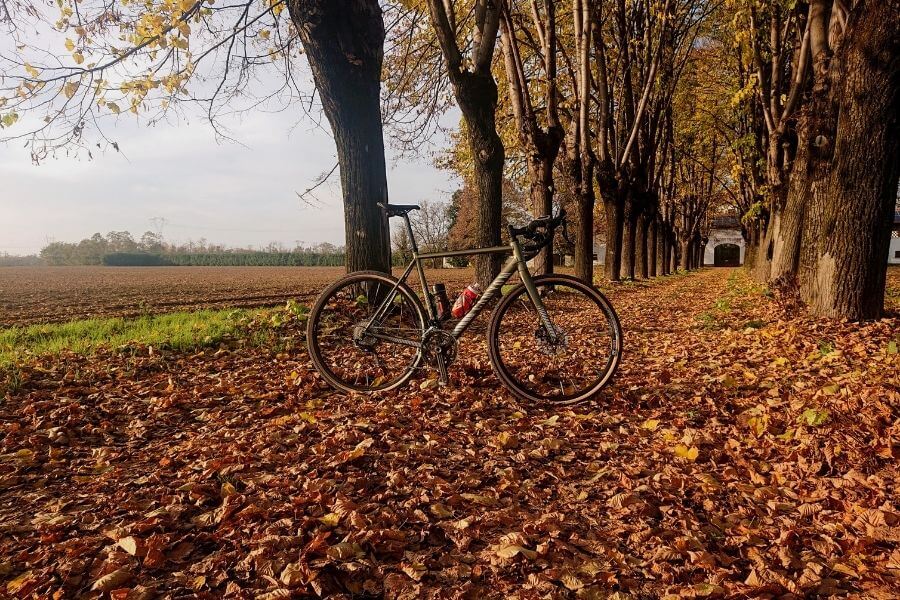
(Image: Michael Tabolsky - UNSPLASH)[/caption]
You decide, but the reality is one. Geometry, transmission and until grave bike wheel are elements conceived to respond to the demands of off -road driving. Although it is not essential that you use a specific bicycle, with it you will make your experience much more comfortable and pleasant.
Don't expect you
Serla bicycle It is as agile and fast on the asphalt as a road bike, or as capable as a trail mountain bike. A serious bicycle is a tool that allows you to explore beyond asphalt and even try some paths.
You can enjoy the efficacy of bicycles with a handlebar similar to the road on the asphalt and on simple tracks. Likewise, you can face more technical trails for which you would not even dare to roll with smooth and narrow tires.
Many cyclists with space or budget limitations choose a serious bicycle with two wheel games: one for the serious modality and one for road. In this case, you will gain in versatility, although it is more than probable that the transmission is not optimized for both disciplines.
Is a serious bicycle the same as one of Ciclocross?
[Caption id = "Attachment_4374" Align = "Alignnone" Width = "900"]
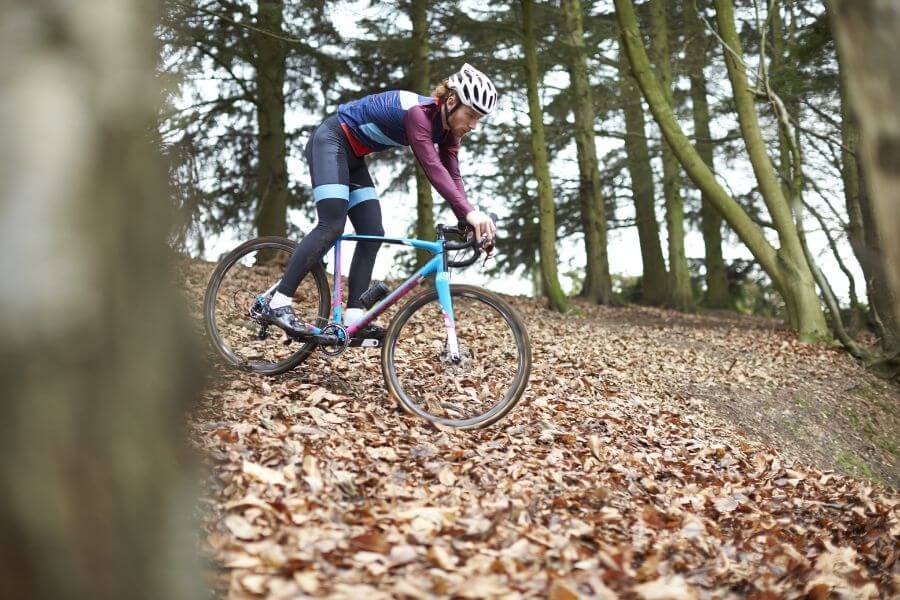
(Shuttersock image)[/caption]
Although grave and cyclocross bicycles have much in common, there are some key differences if they are examined more closely.
The best cyclocross bicycles are designed exclusively for races and are governed by the UCI standards, which establish a maximum of 33 mm of tires and 50 cm wide of handlebars. The geometry is oriented to the competition, with a high pedalier, a more aggressive driving position and a sharp direction for closed curves.
All this fits perfectly with the purpose of giving everything for an hour to maximum power, but it will not be the most appropriate, or comfortable, for much longer serious tours and less focused on the competition.
[IRP Posts = "4181"]
Do I need a specific serious bike if you already have a MTB?
Grave bike or rigid mountain bike? The line that separates both options can be very fine.
There is nothing wrong with setting up a rigid, or semi -rigid mountain bike, to cross gravel and trail clues. However, you are likely to feel the advantages of a specific bicycle for Grange if you intend to roll a lot for this type of land.
The stiffness of a typical serious bicycle picture combined with a low handlebar position will provide you with greater aerodynamic and pedaling efficiency on roads and gravel tracks. This, even sacrificing part of the comfort offered by the fork of an MTB bicycle with front suspension.
In the longest journeys, and on the excursions of several days by bicycle, a handlebar similar to that of a road bike offers more varied hands for the hands, which can be beneficial to minimize the inconvenience in the upper extremities.
On the other hand, shooting with a serious bike for more or less technical terrain forces you to play with the weights of the body, which results in an obvious technical improvement on the bicycle.
Why are tires so important in grave?
An adequate pneumatics game for Grange can make a difference between enjoying your route to the fullest or becoming a real nightmare. Being the point of contact between the bicycle and the ground, you must pay attention to the type of tire, the rolling band, the ball and the pressure. All this, without losing sight of the terrain and the conditions that you anticipate finding.
Chamberless tires (tubess) are highly recommended for off-road conduction, since you are likely to find sharp thorns and stones, and this will also allow you to use lower tires pressures with a lower risk of punctures.
That said, the risk of puncture does not disappear with a chamber without configuration, so it is essential to maintain the correct pressure and exit with a tubess kit for possible repairs.
The equipment for your serious getaways
[Captation Id = "Attachment_6500" Align = "Alignnone" Width = "900"]
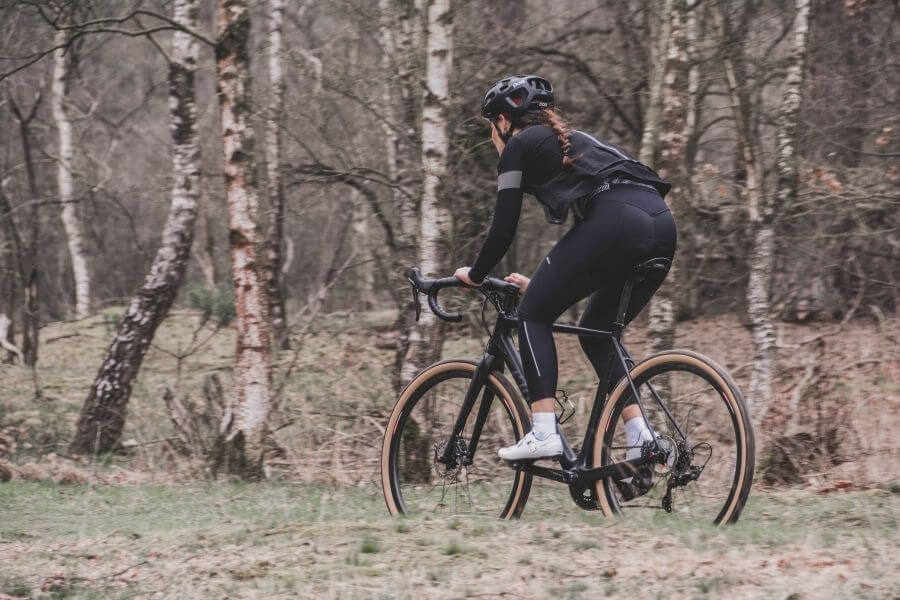
Image: Coen van de Broek[/caption]
It is always better to sin by excess than by default material. Especially when we talk about off-road routes.
Make sure you carry all the tools and spare parts you may need. Includes a Trochacadenas and a fast chain link, a tubess repair kit, spare cameras, a good pump ... and if you are really going to get lost by nature, flanges, adhesive tape, and even spare brake pads, they can save you more than a hurry.
If we add spare clothes and some food to all this, you will need saddlebags and/or travel bags to mount in the box, in the handlebar or behind the saddle. These elements will help you save your objects safely without interfering with driving.
A little planning before rolling, with a route loaded in a cyclocomputer with GPS, a smartwatch or your phone, it can be of great help. Applications such as Wikiloc or Komoot are useful because they make suggestions based on users' experiences, which means you can build a trip through the most interesting grave routes, and even mark the places to take something or make a technical stop
Of course, nothing prevents you from combining your GPS track with the always useful paper map when it comes to planning longer trips.
It should also be noted that, as it is likely that on your routes you will get away from the towns and cities, and being the slowest rhythm than on the road, you should carry enough water and food. There is nothing worse than being lying in the middle of nowhere without a refreshment in kilometers around.
The difference between grave and bikepacking
[Captation id = "Attachment_8205" Align = "Alignnone" Width = "900"]
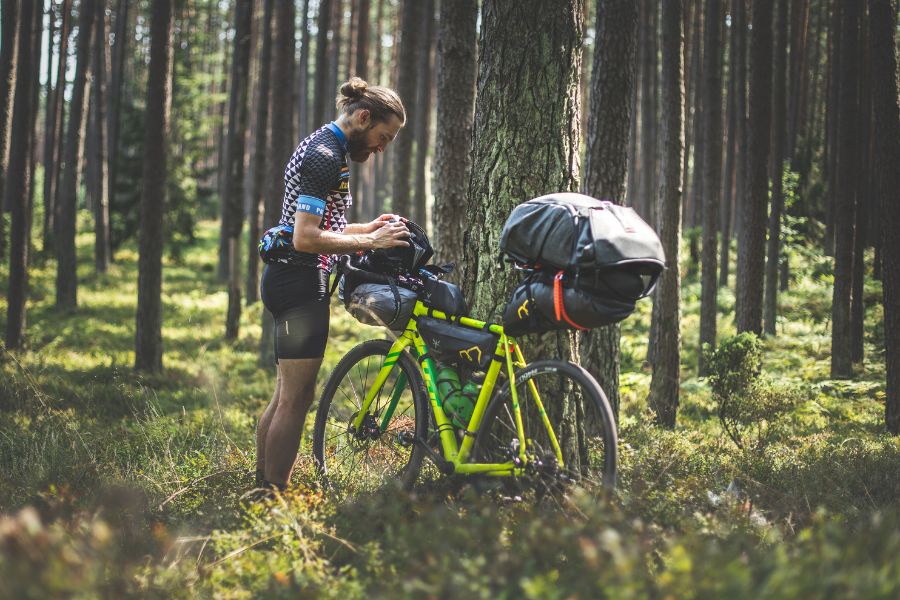
Image: Marek Piwnicki.[/caption]
The bikepacking is a term used to describe several days bike tours facing off -road routes, largely away from the roads.
Making bikepacking implies spending one or several nights on the route, sleeping in full or covered, in hotels or shelters, for example. This activity, in addition to an adequate bicycle, requires carrying luggage in saddlebags or bags that are located in different parts of the bicycle.
You can use your serious bicycle to practice this cycling modality, or even a mountain bike, or a cycling. The choice will depend on the land that you have planned to circulate and your personal preferences.
Skills necessary to become a serious cyclist
For those who are introduced into the Grave, from road cycling, the beginnings can be a bit discouraging. The land makes the bike reactions more unpredictable than on the asphalt and, like everything else, you need an adaptation and learning period.
When I face up with a loose gravel, it is a good idea to remain sitting instead of swinging uploaded on the pedals. In this way, you will keep your weight on the rear wheel and prevent it from skidding.
Taking curves on tracks and roads is also different than on the asphalt. The path must be softer, avoiding the sections where the thickest gravel is deposited. Attacking the curves inside will always give you more margin of maneuver in the event that something goes wrong.
The more technical the terrain becomes, the more important the choice of the traced is, as in mountain cycling. For a faster step, gently curve, avoiding large stones, roots, etc.
When you reach the curves, keep calm and always look forward, to anticipate the ground, instead of looking right in front of the handlebars. Thus, the body will adopt a natural posture that will help you draw the curve without difficulty. As you can imagine, having experience in MTB can help you handle you with the bike in unstable terrain.
Grandl events and races
[Captation id = "Attachment_3354" Align = "Alignnone" Width = "900"]
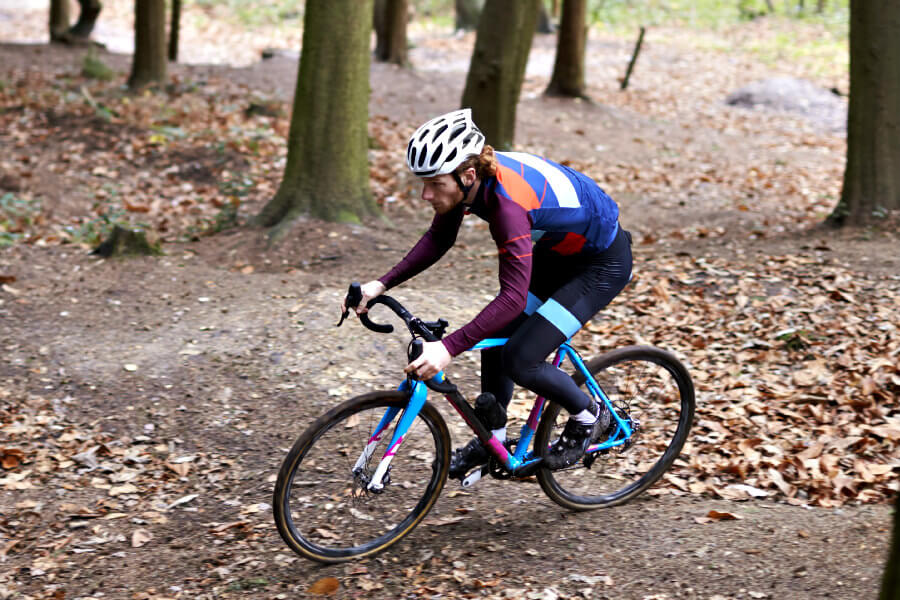
Image: Shuttersock[/caption]
Explore new corners and design your own routes is great. However, participating in an organized event is an ideal opportunity to meet other fans and to consider new challenges. The same is left as a competition.
As a young discipline that is, the diversity of formats is enormous. From a single -stage -day races to enduro -style timed segments, several -day bikepacking and fun social careers.
Although the graduate of competition is opening, the recreational, tourist and social component of this cycling modality still remains.
 (Image: Michael Tabolsky - UNSPLASH)[/caption]
You decide, but the reality is one. Geometry, transmission and until grave bike wheel are elements conceived to respond to the demands of off -road driving. Although it is not essential that you use a specific bicycle, with it you will make your experience much more comfortable and pleasant.
Don't expect you Serla bicycle It is as agile and fast on the asphalt as a road bike, or as capable as a trail mountain bike. A serious bicycle is a tool that allows you to explore beyond asphalt and even try some paths.
You can enjoy the efficacy of bicycles with a handlebar similar to the road on the asphalt and on simple tracks. Likewise, you can face more technical trails for which you would not even dare to roll with smooth and narrow tires.
Many cyclists with space or budget limitations choose a serious bicycle with two wheel games: one for the serious modality and one for road. In this case, you will gain in versatility, although it is more than probable that the transmission is not optimized for both disciplines.
(Image: Michael Tabolsky - UNSPLASH)[/caption]
You decide, but the reality is one. Geometry, transmission and until grave bike wheel are elements conceived to respond to the demands of off -road driving. Although it is not essential that you use a specific bicycle, with it you will make your experience much more comfortable and pleasant.
Don't expect you Serla bicycle It is as agile and fast on the asphalt as a road bike, or as capable as a trail mountain bike. A serious bicycle is a tool that allows you to explore beyond asphalt and even try some paths.
You can enjoy the efficacy of bicycles with a handlebar similar to the road on the asphalt and on simple tracks. Likewise, you can face more technical trails for which you would not even dare to roll with smooth and narrow tires.
Many cyclists with space or budget limitations choose a serious bicycle with two wheel games: one for the serious modality and one for road. In this case, you will gain in versatility, although it is more than probable that the transmission is not optimized for both disciplines.
 (Shuttersock image)[/caption]
Although grave and cyclocross bicycles have much in common, there are some key differences if they are examined more closely.
The best cyclocross bicycles are designed exclusively for races and are governed by the UCI standards, which establish a maximum of 33 mm of tires and 50 cm wide of handlebars. The geometry is oriented to the competition, with a high pedalier, a more aggressive driving position and a sharp direction for closed curves.
All this fits perfectly with the purpose of giving everything for an hour to maximum power, but it will not be the most appropriate, or comfortable, for much longer serious tours and less focused on the competition.
[IRP Posts = "4181"]
(Shuttersock image)[/caption]
Although grave and cyclocross bicycles have much in common, there are some key differences if they are examined more closely.
The best cyclocross bicycles are designed exclusively for races and are governed by the UCI standards, which establish a maximum of 33 mm of tires and 50 cm wide of handlebars. The geometry is oriented to the competition, with a high pedalier, a more aggressive driving position and a sharp direction for closed curves.
All this fits perfectly with the purpose of giving everything for an hour to maximum power, but it will not be the most appropriate, or comfortable, for much longer serious tours and less focused on the competition.
[IRP Posts = "4181"]
 Image: Coen van de Broek[/caption]
It is always better to sin by excess than by default material. Especially when we talk about off-road routes.
Make sure you carry all the tools and spare parts you may need. Includes a Trochacadenas and a fast chain link, a tubess repair kit, spare cameras, a good pump ... and if you are really going to get lost by nature, flanges, adhesive tape, and even spare brake pads, they can save you more than a hurry.
If we add spare clothes and some food to all this, you will need saddlebags and/or travel bags to mount in the box, in the handlebar or behind the saddle. These elements will help you save your objects safely without interfering with driving.
A little planning before rolling, with a route loaded in a cyclocomputer with GPS, a smartwatch or your phone, it can be of great help. Applications such as Wikiloc or Komoot are useful because they make suggestions based on users' experiences, which means you can build a trip through the most interesting grave routes, and even mark the places to take something or make a technical stop
Of course, nothing prevents you from combining your GPS track with the always useful paper map when it comes to planning longer trips.
It should also be noted that, as it is likely that on your routes you will get away from the towns and cities, and being the slowest rhythm than on the road, you should carry enough water and food. There is nothing worse than being lying in the middle of nowhere without a refreshment in kilometers around.
Image: Coen van de Broek[/caption]
It is always better to sin by excess than by default material. Especially when we talk about off-road routes.
Make sure you carry all the tools and spare parts you may need. Includes a Trochacadenas and a fast chain link, a tubess repair kit, spare cameras, a good pump ... and if you are really going to get lost by nature, flanges, adhesive tape, and even spare brake pads, they can save you more than a hurry.
If we add spare clothes and some food to all this, you will need saddlebags and/or travel bags to mount in the box, in the handlebar or behind the saddle. These elements will help you save your objects safely without interfering with driving.
A little planning before rolling, with a route loaded in a cyclocomputer with GPS, a smartwatch or your phone, it can be of great help. Applications such as Wikiloc or Komoot are useful because they make suggestions based on users' experiences, which means you can build a trip through the most interesting grave routes, and even mark the places to take something or make a technical stop
Of course, nothing prevents you from combining your GPS track with the always useful paper map when it comes to planning longer trips.
It should also be noted that, as it is likely that on your routes you will get away from the towns and cities, and being the slowest rhythm than on the road, you should carry enough water and food. There is nothing worse than being lying in the middle of nowhere without a refreshment in kilometers around.
 Image: Marek Piwnicki.[/caption]
The bikepacking is a term used to describe several days bike tours facing off -road routes, largely away from the roads.
Making bikepacking implies spending one or several nights on the route, sleeping in full or covered, in hotels or shelters, for example. This activity, in addition to an adequate bicycle, requires carrying luggage in saddlebags or bags that are located in different parts of the bicycle.
You can use your serious bicycle to practice this cycling modality, or even a mountain bike, or a cycling. The choice will depend on the land that you have planned to circulate and your personal preferences.
Image: Marek Piwnicki.[/caption]
The bikepacking is a term used to describe several days bike tours facing off -road routes, largely away from the roads.
Making bikepacking implies spending one or several nights on the route, sleeping in full or covered, in hotels or shelters, for example. This activity, in addition to an adequate bicycle, requires carrying luggage in saddlebags or bags that are located in different parts of the bicycle.
You can use your serious bicycle to practice this cycling modality, or even a mountain bike, or a cycling. The choice will depend on the land that you have planned to circulate and your personal preferences.
 Image: Shuttersock[/caption]
Explore new corners and design your own routes is great. However, participating in an organized event is an ideal opportunity to meet other fans and to consider new challenges. The same is left as a competition.
As a young discipline that is, the diversity of formats is enormous. From a single -stage -day races to enduro -style timed segments, several -day bikepacking and fun social careers.
Although the graduate of competition is opening, the recreational, tourist and social component of this cycling modality still remains.
Image: Shuttersock[/caption]
Explore new corners and design your own routes is great. However, participating in an organized event is an ideal opportunity to meet other fans and to consider new challenges. The same is left as a competition.
As a young discipline that is, the diversity of formats is enormous. From a single -stage -day races to enduro -style timed segments, several -day bikepacking and fun social careers.
Although the graduate of competition is opening, the recreational, tourist and social component of this cycling modality still remains.












